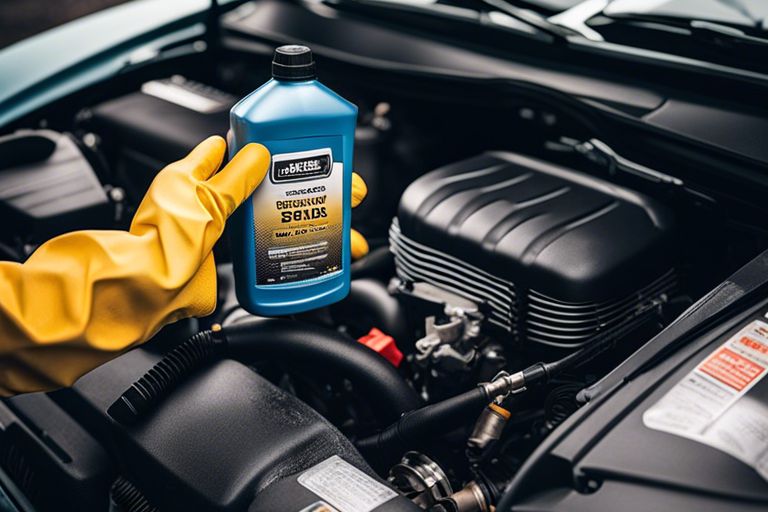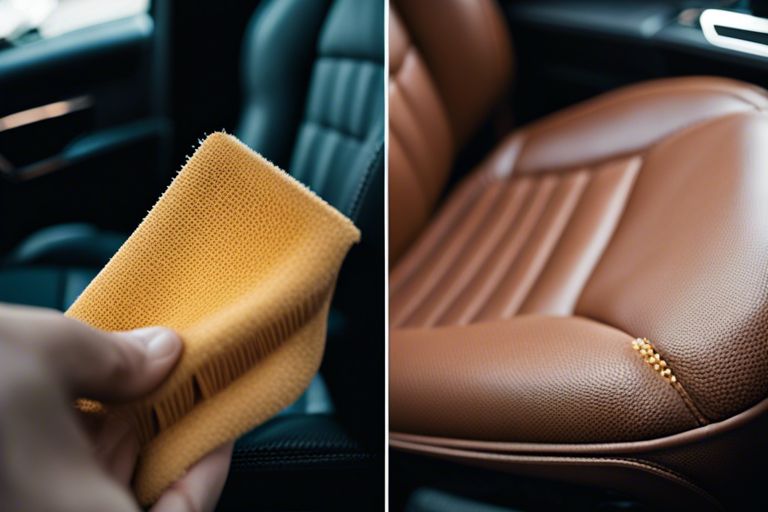Dealing with a coolant spill on your engine can be a challenging task, but with the right knowledge and tools, you can effectively clean it up and prevent any potential damage. Whether it’s due to a leak or an overflow, coolant spills can create a slippery and hazardous mess in your engine bay, posing a risk of overheating and mechanical failure. In this informative blog post, we will guide you through the step-by-step process of cleaning up a coolant spill on your engine, ensuring a safe and efficient solution to this common problem. By following these expert tips, you’ll be able to safeguard your engine and keep it running smoothly.
Pre-Cleaning Preparation
To effectively clean a coolant spill on your engine, there are several important steps you need to take before diving into the cleaning process. By following these pre-cleaning preparations, you can ensure a safe and effective cleanup while minimizing potential risks.
Safety Precautions
Before you begin the cleaning process, it’s crucial to prioritize safety. Coolant spills can be hazardous to your health and the environment, as coolant contains toxic chemicals. Therefore, it’s essential to wear protective gear, such as gloves and safety goggles, to shield yourself from potential exposure. Additionally, make sure the engine has cooled down completely to prevent any burns or injuries during the clean-up process. Lastly, always have a well-ventilated workspace to minimize the inhalation of harmful fumes.
Tools and Materials Needed
When preparing to clean the coolant spill on your engine, gather the necessary tools and materials to streamline the process. You will need absorbent materials such as kitty litter or paper towels to soak up the spilled coolant. Additionally, have a spill kit or a suitable cleaner specifically designed for coolant spills on hand. You may also require a scraper or brush to remove any stubborn residue. Lastly, a container for proper disposal of the contaminated materials is essential to prevent environmental contamination.
 Cleaning the Coolant Spill
Cleaning the Coolant Spill
Clearly, cleaning a coolant spill on your engine is crucial for preventing corrosion and maintaining the safety and efficiency of your vehicle. If you’ve experienced a coolant spill, you’ll want to act quickly to address the issue. Here’s how you can effectively clean up a coolant spill on your engine.
Initial Coolant Spill Containment
When you first notice a coolant spill on your engine, it’s important to act quickly to contain the spill and prevent it from spreading further. Your immediate priority should be to stop the leak at its source by addressing any damaged hoses or fittings. Once you’ve stopped the leak, you can begin to contain the spilled coolant by using absorbent materials such as cat litter or oil absorbent pads. These materials will help to soak up the spilled coolant, preventing it from spreading and causing further damage to your engine.
Detailed Cleaning Process
Once you’ve contained the initial spill, you can begin the detailed cleaning process to fully remove the coolant from your engine. Start by thoroughly rinsing the affected area with water to dilute and remove as much of the coolant as possible. After rinsing, you can use a degreaser or mild detergent to clean the area and remove any remaining coolant residue. Be sure to rinse the area thoroughly with water after using the degreaser to prevent any chemical residue from causing further damage to your engine.
Remember, when cleaning spilled coolant from the engine bay, it’s important to prioritize your safety. Coolant can be toxic if ingested, so be sure to wear gloves and avoid direct contact with the spilled coolant. Additionally, be mindful of environmental regulations when disposing of any materials used to clean up the spill. For a more detailed guide on cleaning spilled coolant from the engine bay, you can refer to this helpful resource on cleaning spilled coolant from the engine bay.
Post-Cleaning
Despite your thorough cleaning efforts, it’s crucial to take further steps to ensure that your engine is in good condition after a coolant spill. For more detailed guidance on cleaning a coolant leak on your engine bay, you can refer to How to clean Coolant leak on engine bay.
Inspecting for Possible Damage
Once the spill has been cleaned up, you should inspect the engine for any possible damage caused by the coolant. Look for corrosion on metal parts, as well as any signs of deterioration on plastic components. Pay close attention to the radiator, hoses, and gaskets to make sure they have not been compromised. If you notice any damage, it’s essential to address it immediately to prevent further issues with your engine’s cooling system.
Preventative Measures for Future Spills
After cleaning up a coolant spill, it’s important to take preventative measures to avoid future spills. Regularly check your engine’s cooling system for any signs of leaks or damage. Make sure that all connections are secure and that hoses and gaskets are in good condition. Additionally, consider using a coolant leak detection dye to identify any potential leaks before they become a problem. Proper maintenance and proactive measures can help prevent future coolant spills and maintain the health of your engine.

Conclusion: How to Clean Coolant Spill on Engine
Upon reflecting on the steps outlined, you now have the knowledge and confidence to effectively clean a coolant spill on your engine. By taking immediate action and using the appropriate safety equipment, you can prevent any potential corrosion or damage to your vehicle. Remember to thoroughly clean the affected area and dispose of any contaminated materials properly. With this information in mind, you can ensure that your engine remains in excellent condition and that you are prepared to handle any future coolant spills that may occur.
FAQ – How to Clean Coolant Spill on Engine
Q: What should I do if I notice a coolant spill on my engine?
A: Act quickly to clean up the spill to prevent potential damage to your engine. Coolant can be corrosive and cause harm if left unattended.
Q: How can I safely clean up a coolant spill on my engine?
A: Start by wearing protective gloves and using a coolant-safe cleaner or a mixture of water and mild detergent. Use a clean cloth to absorb as much of the spill as possible without spreading it further.
Q: Are there any areas of the engine that I should pay special attention to while cleaning up a coolant spill?
A: Yes, take care to clean any electrical components that may have come into contact with the spill. Use a dry cloth to gently pat them dry without causing any damage.
Q: Can I use a pressure washer to clean a coolant spill on my engine?
A: It is not recommended to use a pressure washer as the force of the water may drive the coolant into areas where it can cause further damage. Stick to gentle cleaning methods to avoid any potential issues.
Q: After cleaning up a coolant spill, should I check for any leaks in the cooling system?
A: Yes, it is advisable to inspect the cooling system for any signs of leakage. This will help prevent future coolant spills and ensure the proper functioning of your engine. If you notice any leaks, have them addressed by a professional mechanic.


